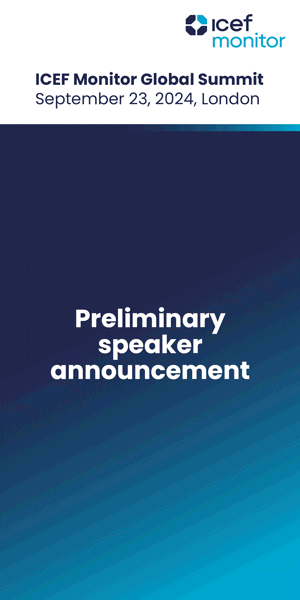Despite Modi’s Bharatiya Janata Party looking at a comfortable 240 seats in India’s parliament, it has fallen short of the 272 majority mark.
This phenomenon, coupled with India’s opposition I.N.D.I.A alliance gaining 232 seats, could lead to a more balanced approach towards education policies on the domestic and international front, according to stakeholders.
“A balanced parliament can foster bipartisan support for comprehensive reforms, focusing on enhancing quality, accessibility, and innovation in higher education. Key areas to watch include increased investment in research and development, stronger industry-academia partnerships, and policies promoting internationalisation. Simplifying the processes for foreign collaborations and encouraging exchange programs can also play a crucial role,” said Meenakshi Chatta, who serves as senior director – India, South and Central Asia, College Board.
Education figures among major priorities for policymakers in the country, evident from its centrally funded institutions – Indian Institutes of Technology and Indian Institutes of Management, National Curriculum Framework, Right To Education Act, and more.
But no other policy has been as monumental as the National Education Policy 2020, hailed for its proposed reforms in school and higher education across India.
Despite its focus on improving basic learning, changing school structures, bringing in four-year interdisciplinary undergraduate programs, and internationalising education in India, many states are yet to implement it over multiple concerns.
According to Eldho Mathews, program officer for internationalisation, higher education council for the Indian state of Kerala, the 2024 election results will only make it harder for the BJP to push NEP on other states, and punish the latter for toeing the line.
“With the BJP not having a majority of its own, the new government wouldn’t be able to push NEP among states that are reluctant to adopt it. Some states’ university funds are tied to the adoption of suggestions under NEP, which could see a shift in the coming years,” said Mathews.
He suggested that policies related to international campuses coming to India and Indian institutions setting up branches abroad would remain the same.
Maya John, an elected teacher representative in the Delhi University’s academic council, told The PIE News that in light of the ruling party’s performance it is expected that enforcement of NEP will be resisted.
“As the hegemonic position of the BJP is eroded, it is expected that at least non-BJP state governments will resist the bulldozing of NEP. But ultimately, it is the pressure of movements from below that would determine the future course of NEP and its implementation,” said John.
But for some, NEP’s promise of internationalisation, which focuses on top-ranked universities setting up shop in the country, is the real game changer, along with the flagship ‘Study In India’ program’.
“NEP 2020 has promulgated the idea of Study In India, making a strong case for transforming India into a destination market. The government has set a target of 500,000 global students studying in India within the next couple of years, marking a 10x increase from 50,000 foreign students in India at present.
“The potent ways to increase foreign students’ enrolment is to grant acceptance to international high-stake assessments such as GRE for graduate, post graduate programs along with recent policy changes by University Grants Commission to create 25% supernumerary seats for foreign students,” recommended Sachin Jain, Country Manager, ETS – India and South Asia.
Though UGC’s Foreign Higher Educational Institutions regulations, notified in November 2023, have failed to attract any foreign campuses so far, the Gujarat International Finance Tec-City, also known as GIFT, in the west Indian state of Gujarat has already seen two Australian universities set up campuses, with two more Australian institutions and a US university poised to follow.
Challenges will include bureascratic red tape, cultural and administrative differences, and ensuring that the quality of education remains high
Karan Gupta, Karan Gupta Education Foundation
“Achieving the goal of opening branches of foreign universities in India and Indian institutions abroad by the next election involves several steps including regulatory framework, infrastructure, and partnerships. The government will need to establish a clear regulatory framework. This will include easing restrictions on foreign direct investment (FDI) in education and ensuring that foreign institutions can operate with academic and administrative autonomy,” said Karan Gupta, founder of the Karan Gupta Education Foundation.
“Challenges will include bureaucratic red tape, cultural and administrative differences, and ensuring that the quality of education remains high. Additionally, there may be resistance from local institutions fearing competition.”
With international education stakeholders expecting benefits for outbound students in India’s upcoming financial budget, there could be some plausible measures in the pipeline for a country that has 1.3 million students abroad as of 2022.
While Chatta believes expanding government-funded scholarship programs, and lower-interest education loans could find a mention in the upcoming budget, Manisha Zaveri, joint managing director, Career Mosaic says targeted schemes for students from tier-2 and tier-3 cities in India are the way to go.
But amid significant visa and international education policy changes across major destinations, including the UK, Australia, and Canada, study abroad education loans are proving to be a tough bet.
“Many banks are now reluctant to provide unsecured lending to students considering there’s much more scrutiny of their applications now in major study abroad markets. Earlier, there was some leeway on this,” said a senior banking official, who oversees education loans.
“There is definitely a slowness in the study abroad market as there are fewer applications than before. In some instances, banks have also raised interest rates to over 11% for education loans, plus the need for higher saving requirements has led to higher fixed deposits of up to 10 lakhs (over £9,000) which is impacting outbound students,” the official told The PIE, on condition of anonymity.
With India staring at a lot of positives and an equal number of challenges, an increased GDP allocation to education, which currently hovers around 2.9%, could be a start.
“Increasing education spending to at least 5-7% of the GDP is imperative at this stage to consolidate gains, sustain momentum, and convert it to jobs and productive profits. This does not only have to be from the government, the private sector has a large role to play in this investment but the lead has to come from the new government at the centre to set the ball rolling in this direction,” said Meeta Sengupta, an education strategist and policy analyst.









